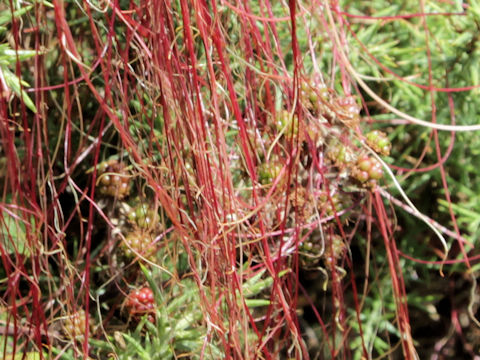|
|
|
|
[Index]
[Back] |
  |
|
|
|
わが国の北海道、それに中国やインド、パキスタン、西アジア、ヨーロッパ、北アフリカに広く分布しています。日当たりのよい山野で、他の植物に巻きついて寄生します。茎は細長く糸状で、黄色、橙色または赤みを帯びます。葉は鱗片状に退化し、寄生根をだして養分を吸収します。7月から8月ごろ、短い穂状花序をだし小さなピンク色の花を咲かせます。果実は蒴果で、成熟すると上部のふたがとれます。中国語では「欧洲菟絲子(ou zhou tu si zi)」と呼ばれます。 |
|
|
ネナシカズラ科ネナシカズラ属の一年草で、学名は Cuscuta europaea。英名は European dodder、Greater dodder。 |
|
|
The European dodder (Cuscuta europaea) belongs to Cuscutaceae (the Dodder family). It is an annual herb that is distributed in Hokkaido, Japan, as well as in China, India, Pakistan, West Asia, Europe, and North Africa. It is a parasitic plant that grows in sunny mountainous areas by wrapping around other plants. The stem is slender and filamentous, yellow, orange or reddish. The short spikelets of small pink flowers bloom from July to August. The fruit is a capsule, the top cap of which is removed when mature. In Chinese, it is called "欧洲菟絲子" (ou zhou tu si zi). |
|
|
イギリス・コーンウォール州「ランズエンド岬」にて、2011年08月21日撮影。(photo by Jon Suehiro) |
|
|
|
Shu Suehiro |